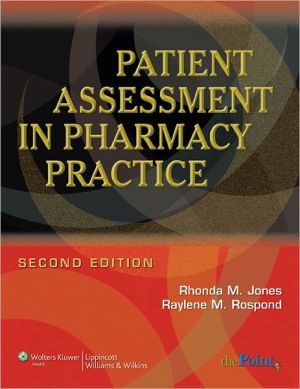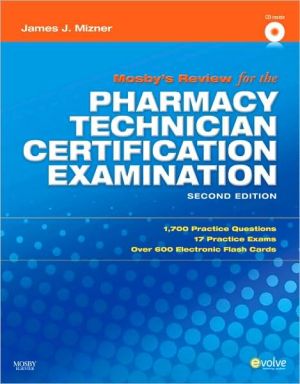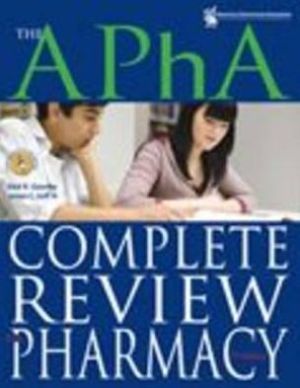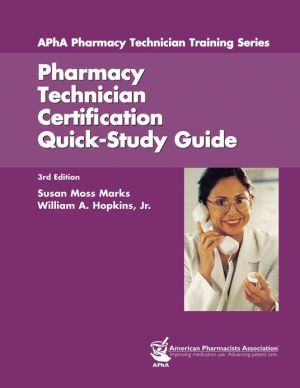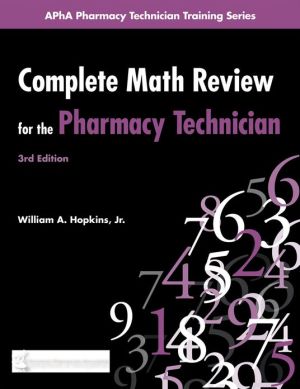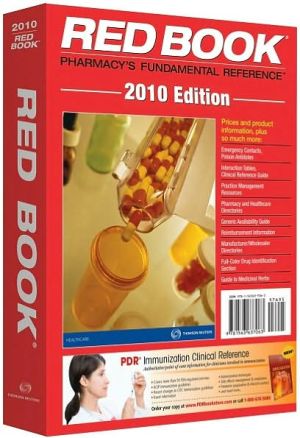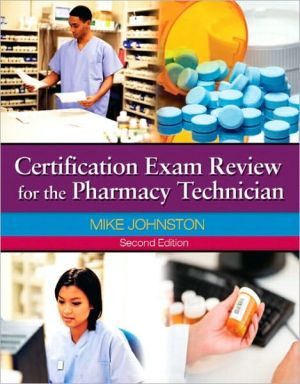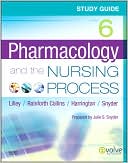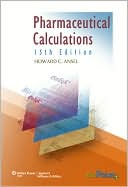Patient Assessment in Pharmacy Practice
This text offers a practical approach to patient assessment skills in pharmacy practice. The book covers basic anatomy and physiology, pathology, and system assessment through interview, communication, and some physical exams, to help pharmacists and pharmacy students correlate signs and symptoms of possible diseases.\ Part 1 discusses global assessment issues and health-related problems that span many body systems. Part 2 covers head-to-toe assessment of body systems and assessment of...
Search in google:
This text offers a practical approach to patient assessment skills in pharmacy practice. The book covers basic anatomy and physiology, pathology, and system assessment through interview, communication, and some physical exams, to help pharmacists and pharmacy students correlate signs and symptoms of possible diseases.Part 1 discusses global assessment issues and health-related problems that span many body systems. Part 2 covers head-to-toe assessment of body systems and assessment of special populations. Each chapter explores pharmacy practice applications, including ambulatory care and special community settings. Case studies in each chapter include interview questions, patient assessment algorithms, sample pharmaceutical care plans, and critical thinking questions.A companion Website will offer the fully searchable text and head-to-toe patient assessment video clips. Doody Review Services Reviewer:Mirza E Perez, PharmD(Temple University School of Pharmacy)Description:This patient assessment book focuses on physical examination skills from the perspective of the pharmacy. It also provides information on how to gather pertinent patient information, identify drug-related problems, and develop a care plan. The first edition was published in 2003.Purpose:The purpose, according to the authors, is to provide students and practitioners with a practical book that relates patient assessment skills to pharmacy practice. The book helps develop and/or improve patient assessment skill using both subjective and objective data. Audience:This book is written for pharmacy students and pharmacists. Features:The first of the book's two parts contains general information about patient assessment and the role of the pharmacist. The second part contains patient assessment information related to specific body systems. Tables summarize important information, photographs enhance the understanding of the different assessment techniques, and a companion web site has videos of different pharmacist-patient encounters as well as heart and lung sounds. Assessment:This is a good instructional and reference book on physical examination skills for pharmacists. This second edition is similar to the first edition, but with some updates.
1Patient Assessment and the Pharmaceutical Care Process22Cultural Considerations in Patient Assessment93Health and Medication History214Principles and Methods of the Basic Physical Examination315General Assessment and Vital Signs436Nutritional Assessment627Pain Assessment858Skin, Hair, and Nails1029Eyes and Ears12910Head and Neck15711Respiratory System18612Cardiovascular System21313Peripheral Vascular System24914Gastrointestinal System26115Hepatic System28616Renal System30717Musculoskeletal System32018Nervous System35919Mental Status38620Endocrine System41321The Male Patient43622The Female Patient463Answers to Self-Assessment Questions485Glossary495
\ From The CriticsReviewer: Mirza E Perez, PharmD(Temple University School of Pharmacy)\ Description: This patient assessment book focuses on physical examination skills from the perspective of the pharmacy. It also provides information on how to gather pertinent patient information, identify drug-related problems, and develop a care plan. The first edition was published in 2003.\ Purpose: The purpose, according to the authors, is to provide students and practitioners with a practical book that relates patient assessment skills to pharmacy practice. The book helps develop and/or improve patient assessment skill using both subjective and objective data. \ Audience: This book is written for pharmacy students and pharmacists. \ Features: The first of the book's two parts contains general information about patient assessment and the role of the pharmacist. The second part contains patient assessment information related to specific body systems. Tables summarize important information, photographs enhance the understanding of the different assessment techniques, and a companion web site has videos of different pharmacist-patient encounters as well as heart and lung sounds. \ Assessment: This is a good instructional and reference book on physical examination skills for pharmacists. This second edition is similar to the first edition, but with some updates.\ \
